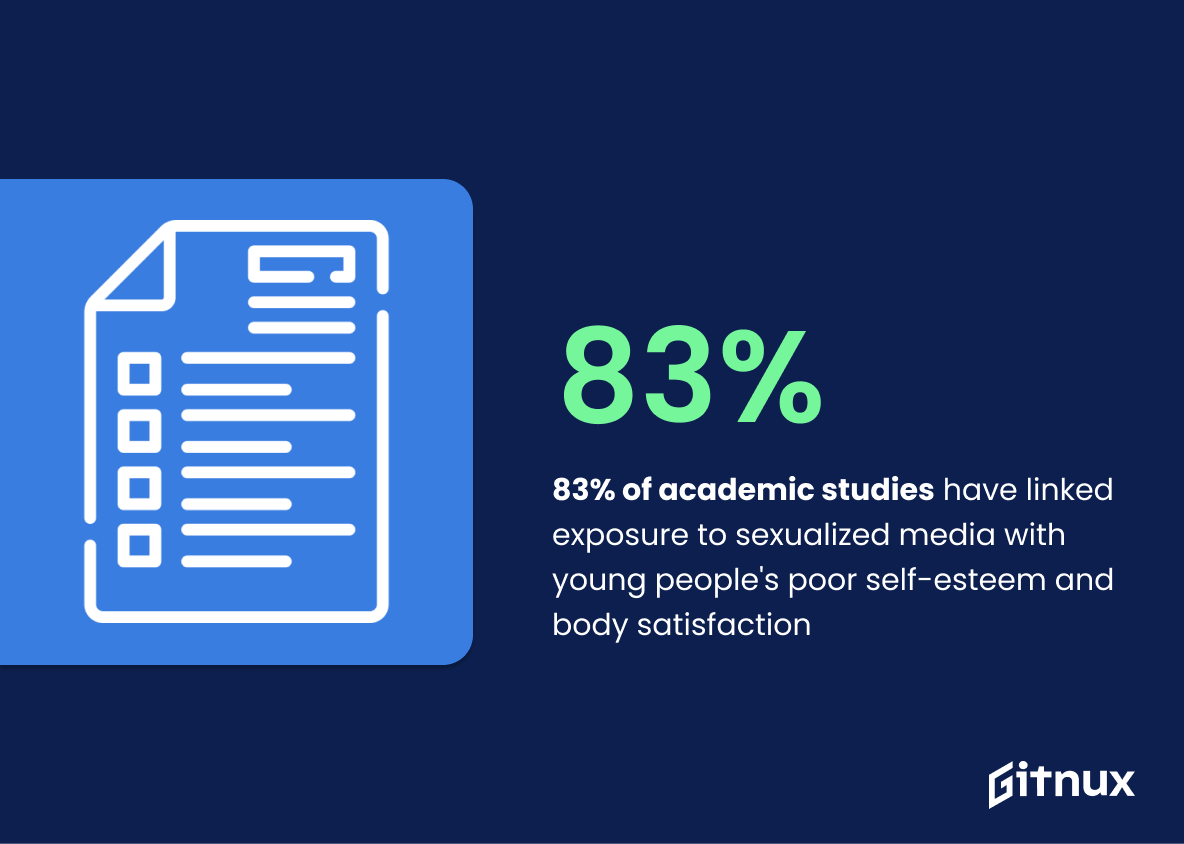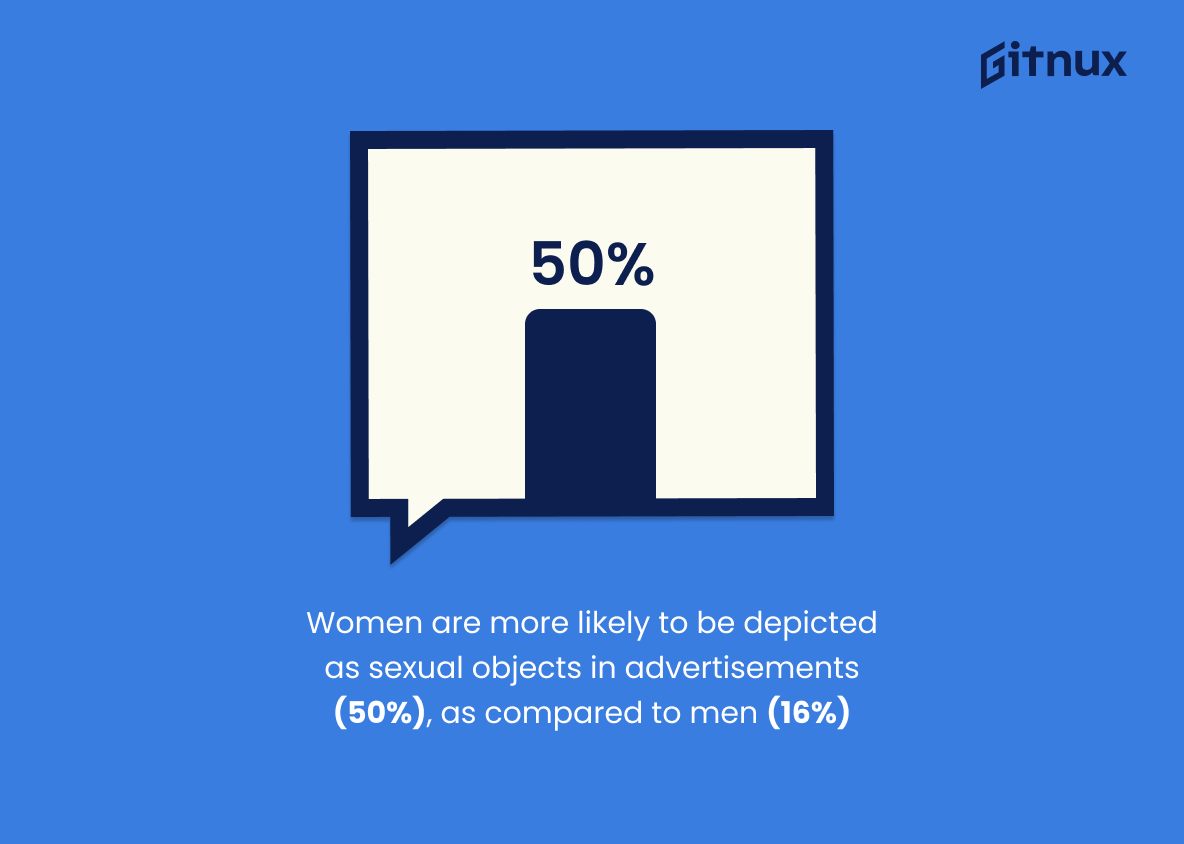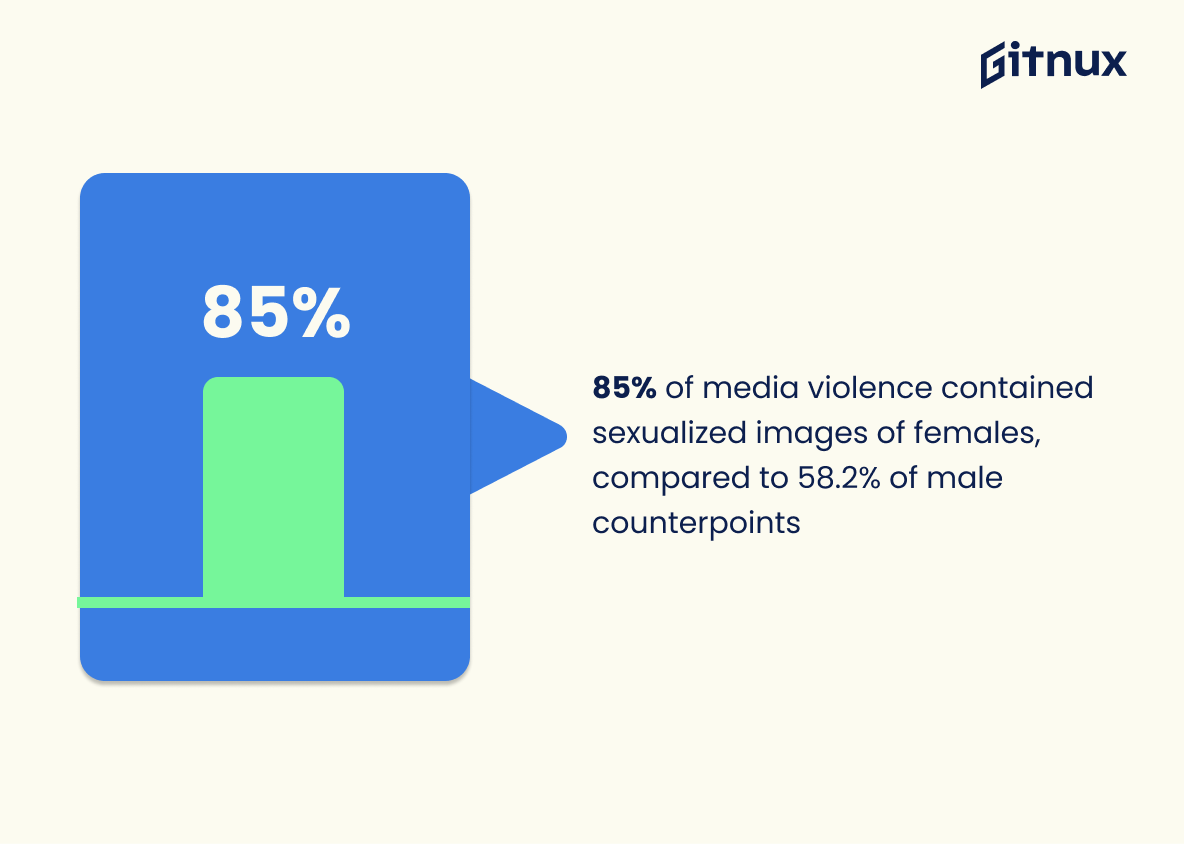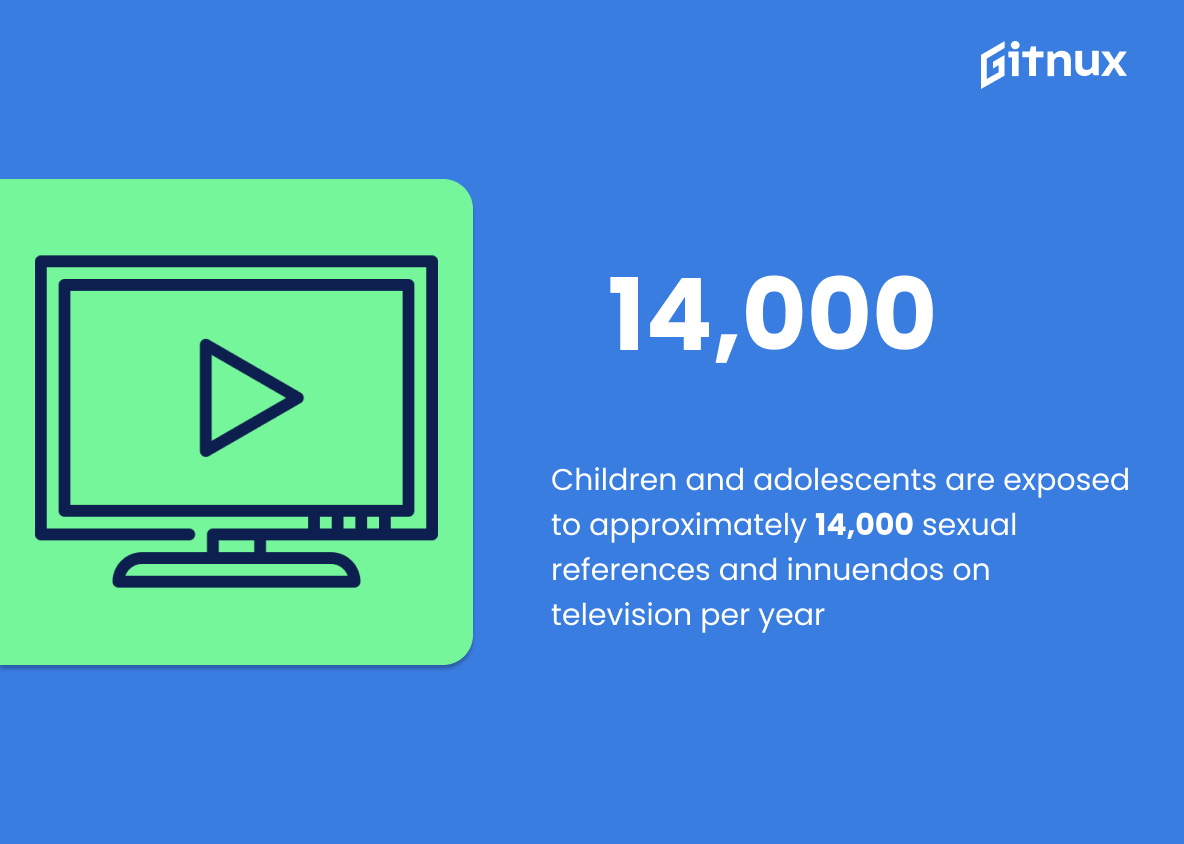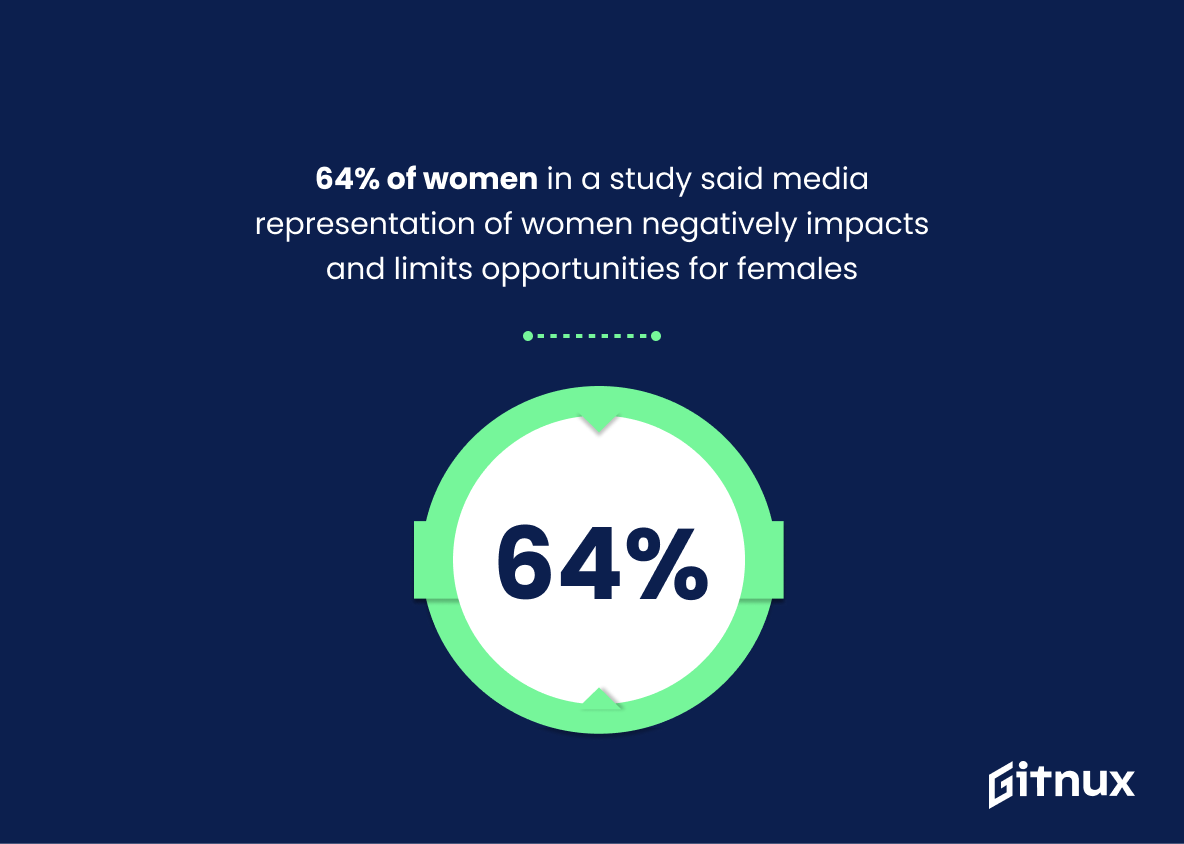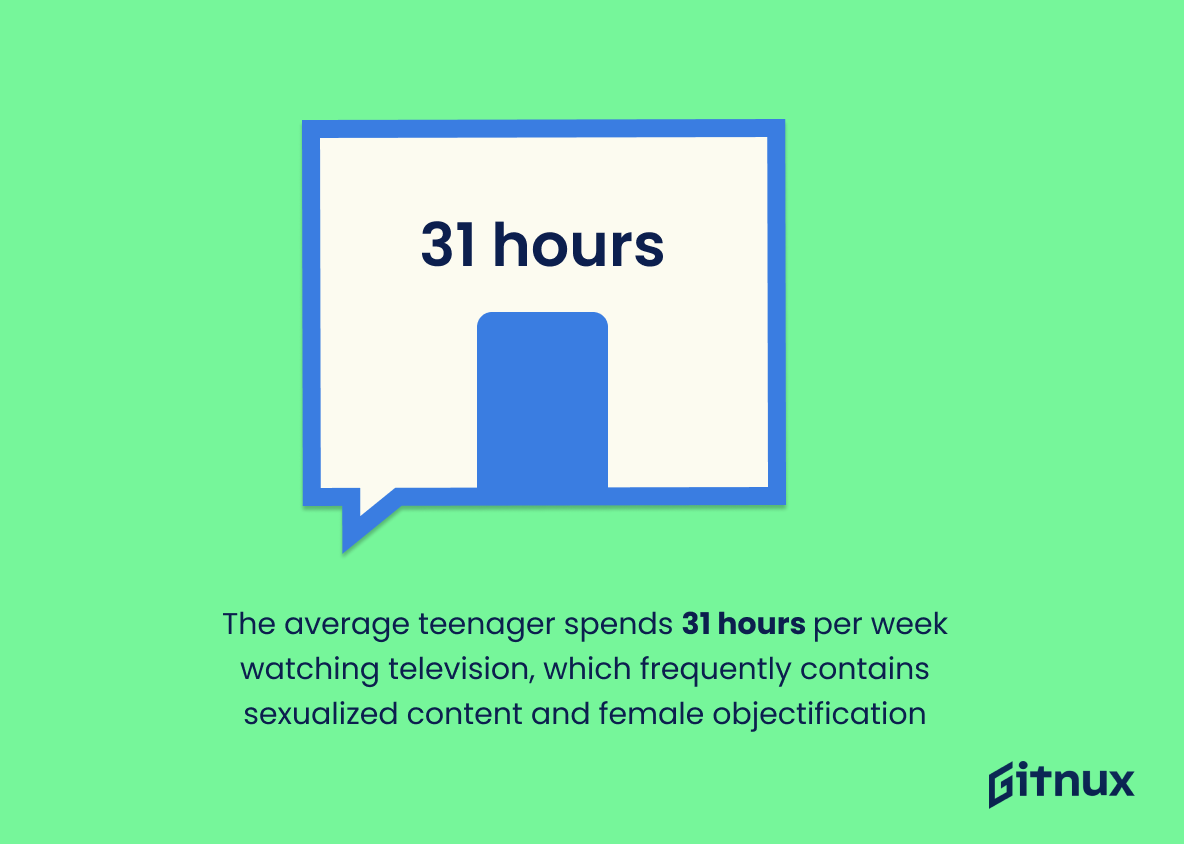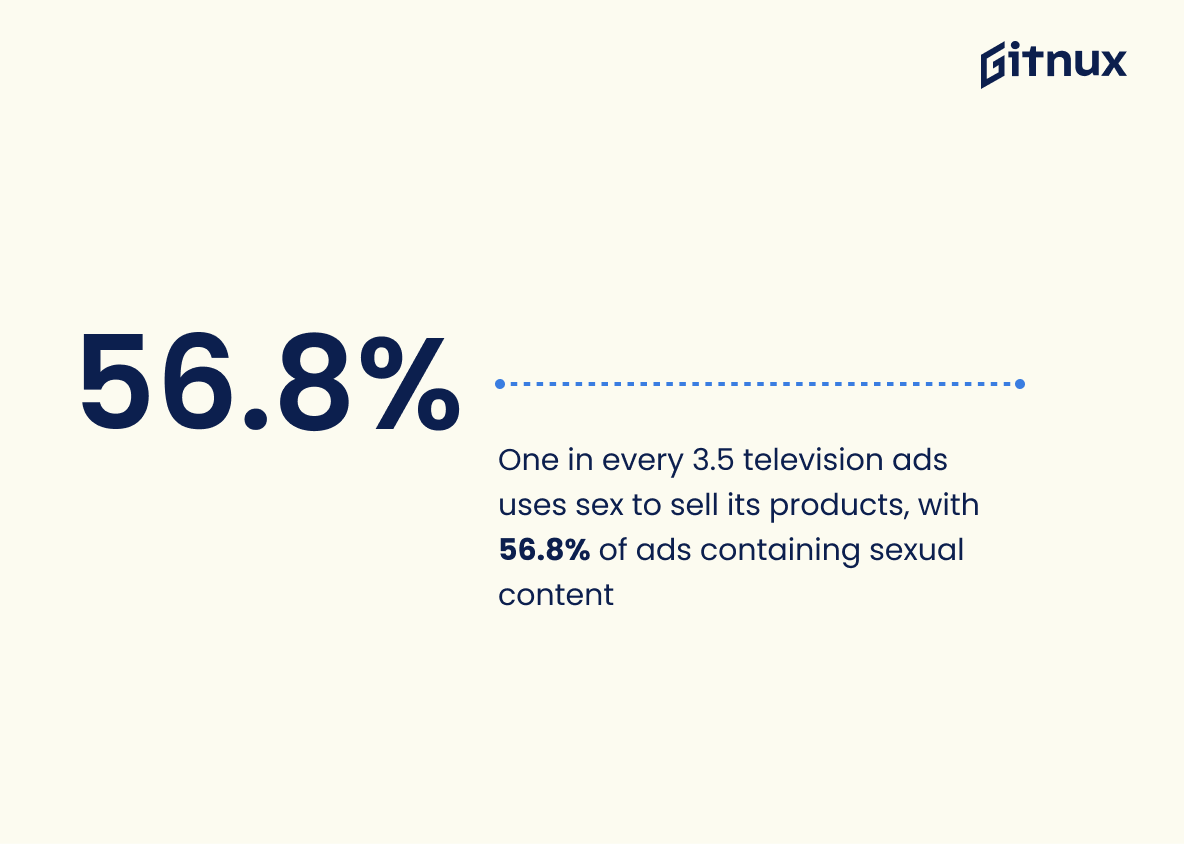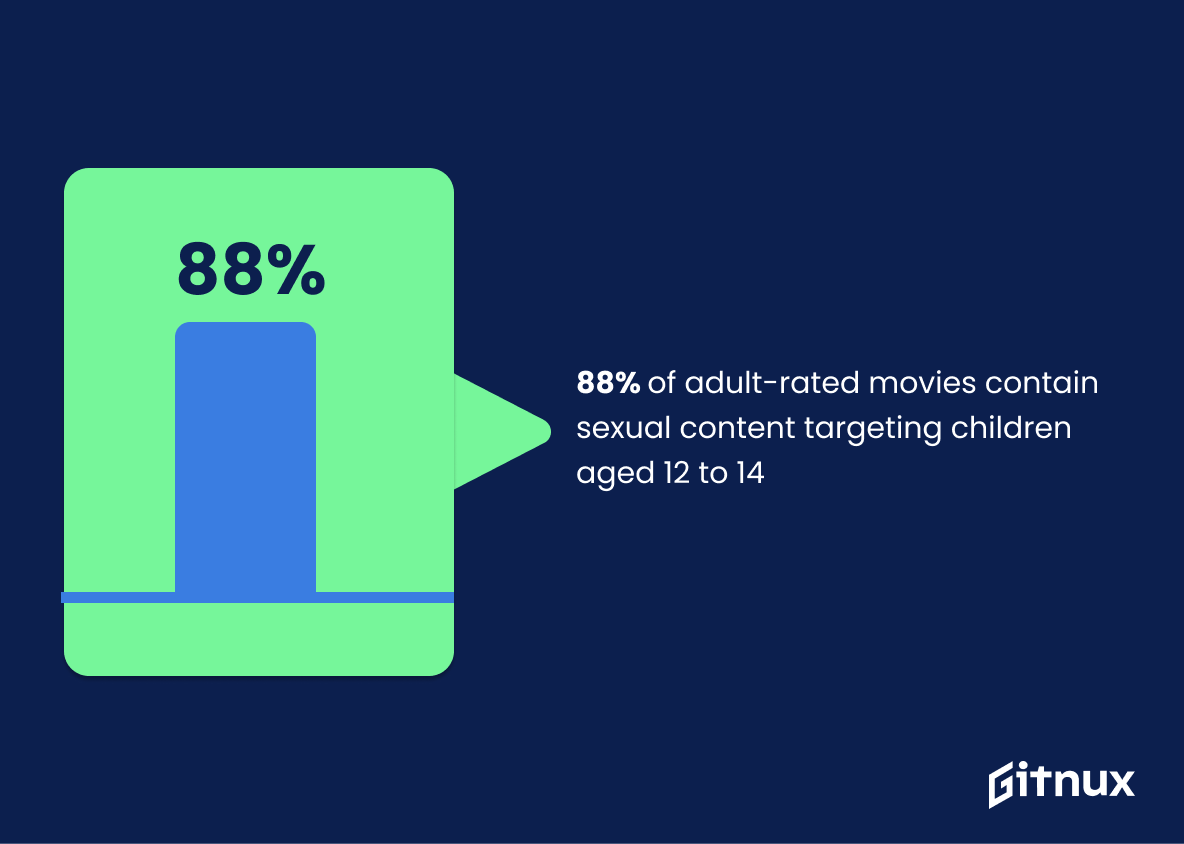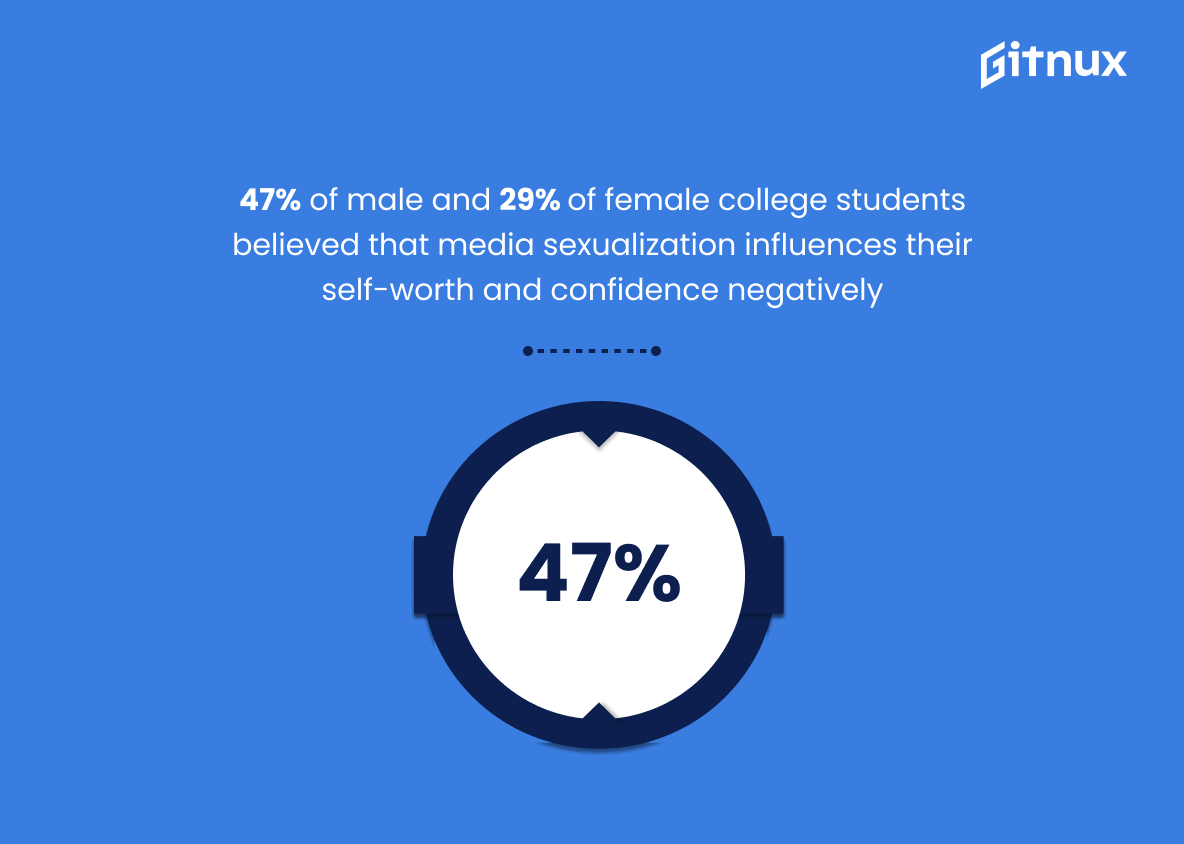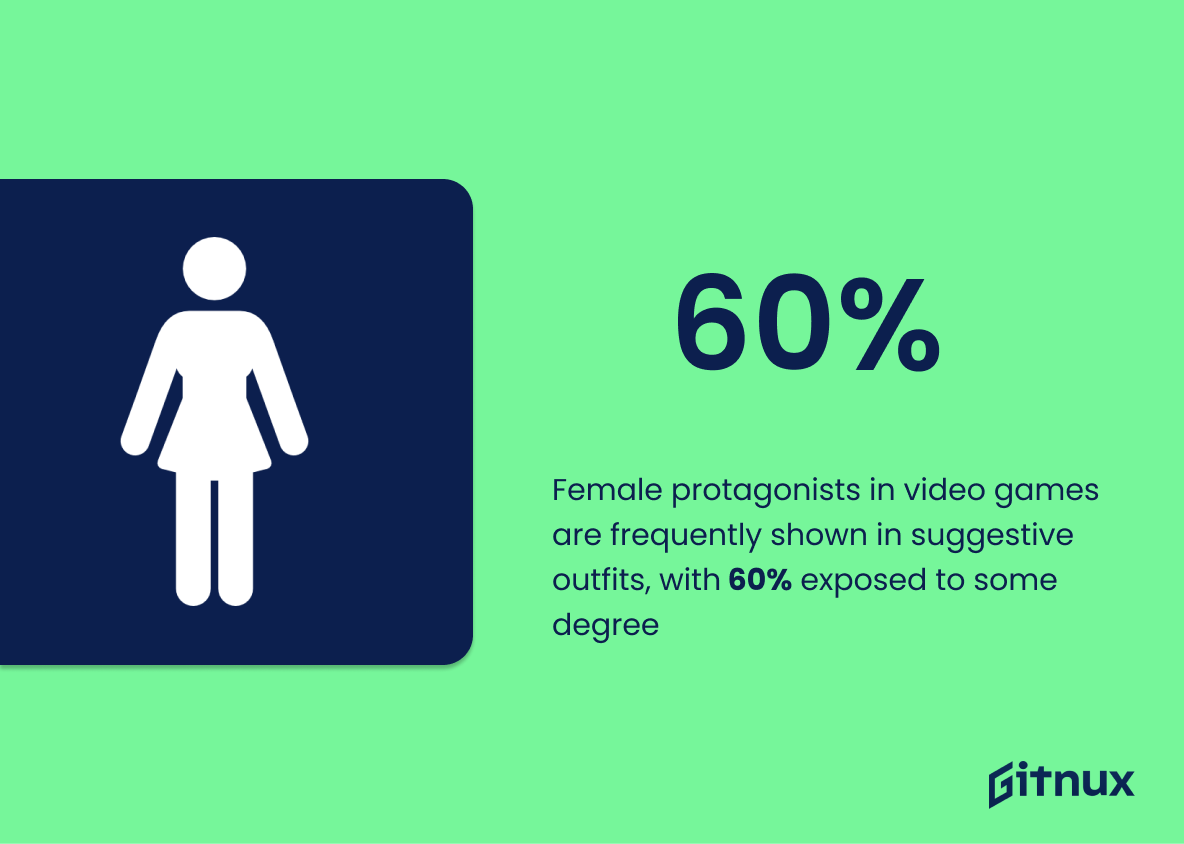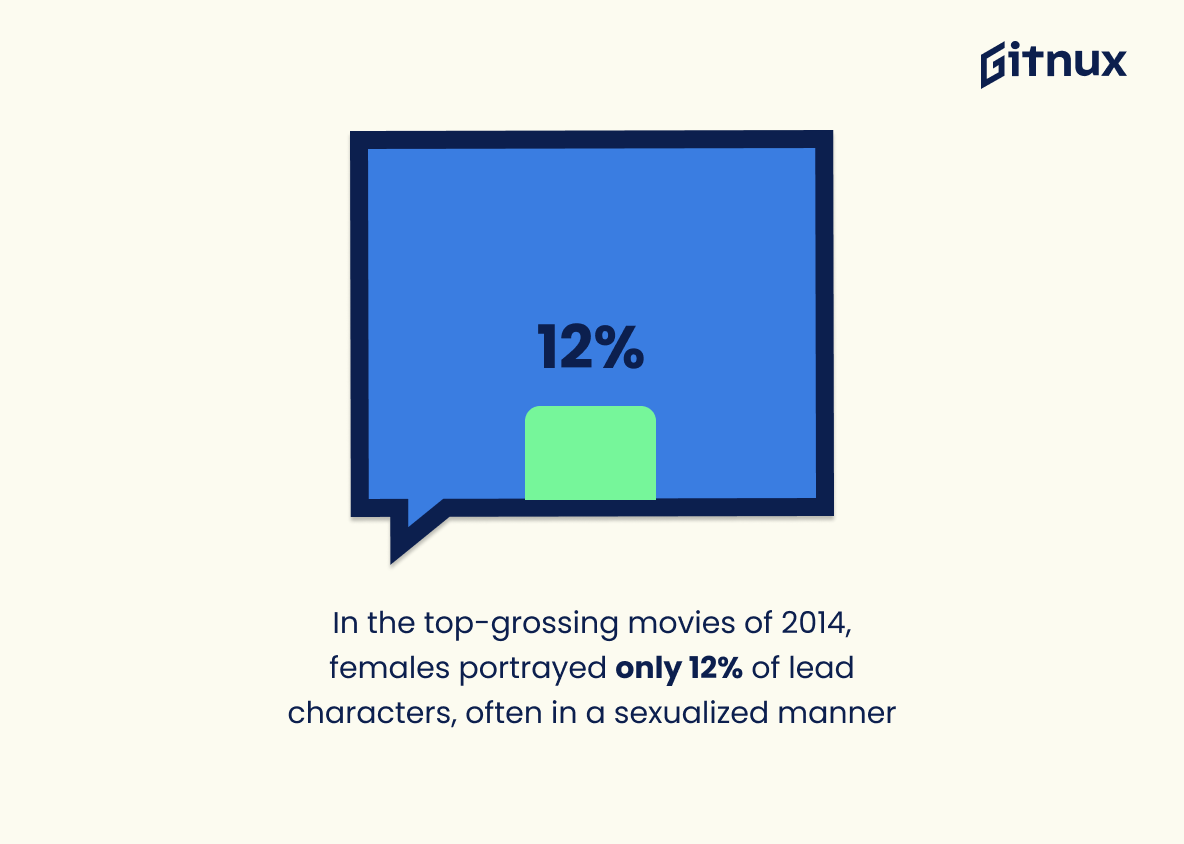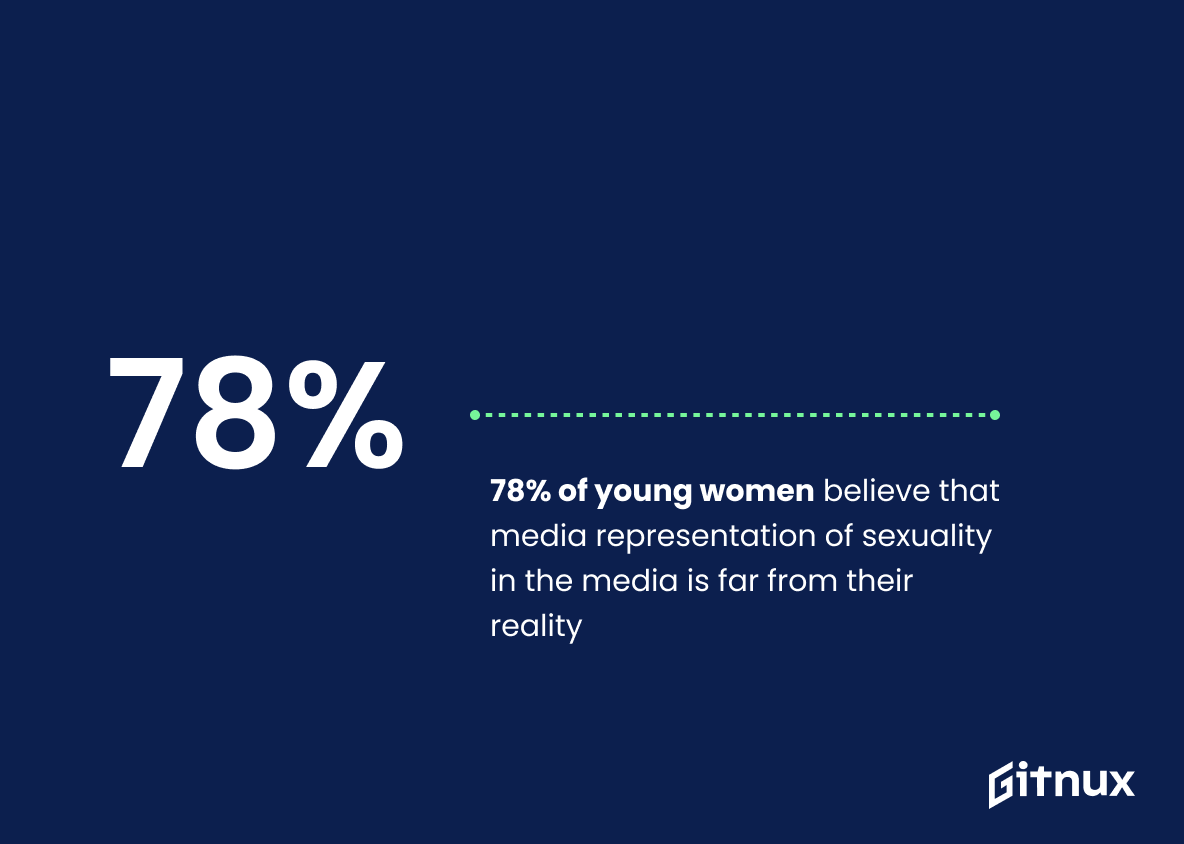The media has a powerful influence on our society, and it is important to understand the impact of sexualization in the media. This blog post will explore statistics related to how women are portrayed in various forms of media, including television shows, movies, video games and advertisements. We will look at studies that have linked exposure to sexualized content with poor self-esteem and body satisfaction among young people as well as other effects such as pressure for girls to be sexy or limited opportunities for females due to negative representation. By understanding these statistics we can gain insight into how pervasive this issue is within our culture today.
This statistic is a powerful indicator of the impact that sexualized media can have on young people’s self-esteem and body satisfaction. It highlights the need for greater awareness of the potential consequences of exposing young people to sexualized media, and the importance of taking steps to reduce its prevalence.
Women are more likely to be depicted as sexual objects in advertisements (50%), as compared to men (16%);
This statistic serves as a stark reminder of the prevalence of sexualization in the media, particularly when it comes to the depiction of women. It highlights the fact that women are far more likely to be objectified in advertisements than men, which can have a damaging effect on how women are perceived in society. This statistic is an important part of the conversation surrounding sexualization in the media, and it is essential that we continue to strive for a more equitable representation of genders in the media.
Sexualization In The Media Statistics Overview
71% of participants agreed that media places pressure on girls to be sexy;
This statistic is a powerful indicator of the influence that media has on girls’ perception of beauty and sexiness. It shows that the majority of participants are aware of the pressure that media places on girls to conform to a certain standard of beauty and sexiness. This statistic is important in the context of a blog post about sexualization in the media because it demonstrates the prevalence of this issue and the need for further discussion and action to address it.
85% of media violence contained sexualized images of females, compared to 58.2% of male counterpoints;
This statistic is a powerful indicator of the prevalence of sexualization of females in the media. It demonstrates that the media is disproportionately portraying women in a sexualized manner, compared to men. This is an important statistic to consider when discussing the sexualization of women in the media, as it highlights the unequal representation of genders in the media.
Children and adolescents are exposed to approximately 14,000 sexual references and innuendos on television per year;
This statistic serves as a stark reminder of the prevalence of sexualization in the media, highlighting the sheer volume of sexual references and innuendos that children and adolescents are exposed to on a yearly basis. It is a powerful illustration of the need to address the issue of sexualization in the media, and to ensure that young people are not exposed to such a high level of sexual content.
64% of women in a study said media representation of women negatively impacts and limits opportunities for females;
This statistic is a powerful indicator of the impact that media representation of women has on the opportunities available to them. It shows that the majority of women surveyed feel that the way women are portrayed in the media has a negative effect on their chances of success. This is an important point to consider when discussing the sexualization of women in the media, as it highlights the need for more positive and empowering representations of women in the media.
The average teenager spends 31 hours per week watching television, which frequently contains sexualized content and female objectification;
This statistic serves as a stark reminder of the prevalence of sexualized content and female objectification in the media, with the average teenager exposed to such material for over four hours a day. It highlights the need for greater awareness of the potential impacts of such content on young people, and the need for more responsible media practices.
One in every 3.5 television ads uses sex to sell its products, with 56.8% of ads containing sexual content;
This statistic is a stark reminder of the prevalence of sexualization in the media. It highlights the fact that sex is being used as a tool to sell products, and that the majority of ads contain sexual content. This is an alarming trend that needs to be addressed, as it can have a damaging effect on how people view themselves and others.
88% of adult-rated movies contain sexual content targeting children aged 12 to 14;
This statistic is a stark reminder of the prevalence of sexual content targeting children aged 12 to 14 in adult-rated movies. It highlights the need for greater awareness and regulation of the media’s portrayal of sexuality, particularly when it comes to young people. It is a call to action for parents, educators, and policy makers to take steps to protect children from the potentially damaging effects of sexualization in the media.
47% of male and 29% of female college students believed that media sexualization influences their self-worth and confidence negatively;
This statistic is a powerful indicator of the impact that media sexualization has on college students’ self-worth and confidence. It shows that a significant portion of both male and female college students are affected by the sexualization of media, and that this can have a negative effect on their self-esteem. This statistic is important to consider when discussing the effects of media sexualization, as it highlights the need for further research and discussion on the topic.
Female protagonists in video games are frequently shown in suggestive outfits, with 60% exposed to some degree;
This statistic is a stark reminder of the prevalence of sexualization in the media, particularly in video games. It highlights the fact that female protagonists are often portrayed in a sexualized manner, with a majority of them exposed to some degree. This is indicative of a larger problem in the media, where women are often objectified and portrayed in a way that reinforces gender stereotypes. This statistic is an important part of the conversation about sexualization in the media, and it serves as a reminder that there is still much work to be done in order to create a more equitable and respectful representation of women in the media.
In the top-grossing movies of 2014, females portrayed only 12% of lead characters, often in a sexualized manner;
This statistic is a stark reminder of the prevalence of sexualization in the media, particularly in the top-grossing movies of 2014. It highlights the fact that female characters are often portrayed in a sexualized manner, and that they are vastly underrepresented in lead roles. This is an issue that needs to be addressed, as it perpetuates the idea that women are objects of sexual desire, rather than complex and multi-dimensional characters.
78% of young women believe that media representation of sexuality in the media is far from their reality;
This statistic is a powerful reminder that the media’s portrayal of sexuality is not reflective of the reality experienced by many young women. It highlights the need for more accurate and diverse representations of sexuality in the media, so that young women can feel seen and heard. This statistic is an important part of the conversation about sexualization in the media, as it demonstrates the disconnect between what is portrayed and what is actually experienced.
In 2013, the percentage of women on-screen wearing sexually revealing clothing in Hollywood blockbusters was 27.9%;
This statistic is a powerful indicator of the prevalence of sexualization in the media. It shows that even in Hollywood blockbusters, which are often seen as the pinnacle of entertainment, women are being portrayed in a sexualized manner. This statistic serves as a reminder that sexualization is still a major issue in the media, and that it needs to be addressed.
Conclusion
The statistics presented in this blog post demonstrate the prevalence of sexualization in media and its negative effects on young people’s self-esteem, body satisfaction, and opportunities for women. From television to video games to movies, it is clear that female characters are often portrayed as objects or with limited roles compared to their male counterparts. This has a direct impact on how girls perceive themselves and limits what they believe they can achieve. It is essential that we continue researching these issues so that we can better understand the implications of sexualized media content and work towards creating more positive representations of gender in all forms of entertainment.
References
0. – https://www.cyberpsychology.eu
1. – https://www.link.springer.com
2. – https://www.osf.io
3. – https://www.theatlantic.com
4. – https://www.apa.org
5. – https://www.doi.org
6. – https://www.annenberg.usc.edu
7. – https://www.digitalcommons.trinity.edu
8. – https://www.gla.ac.uk
9. – https://www.ncbi.nlm.nih.gov
